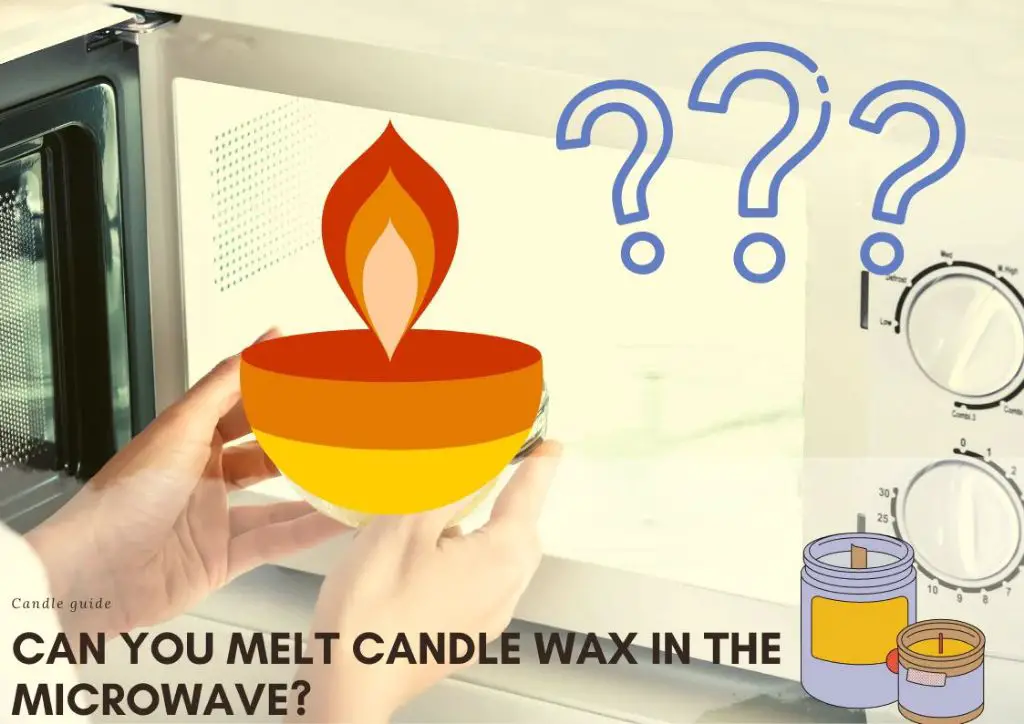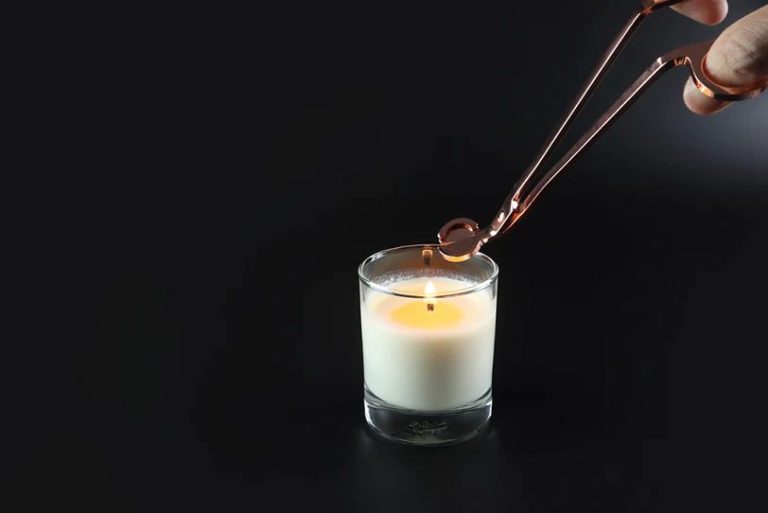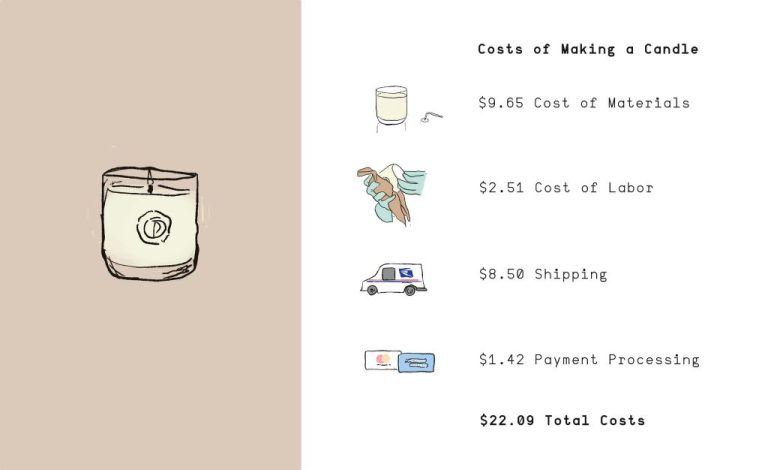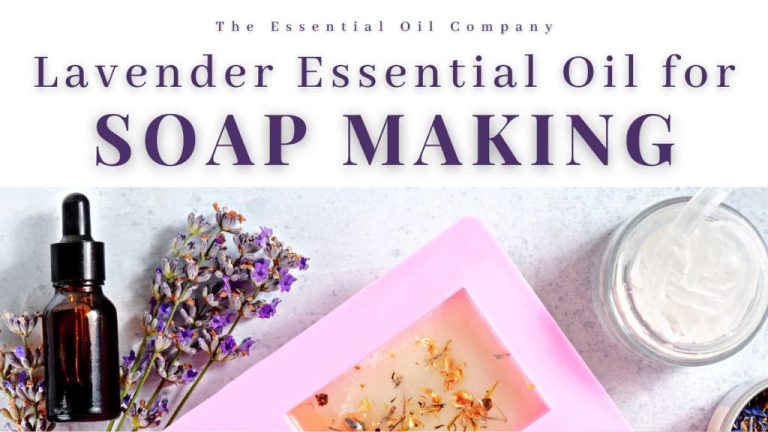Can You Melt Wax In A Microwave?
The purpose of this article is to explore the debate around melting candle wax in the microwave. We provide an overview of the different types of wax used in candles, discuss the benefits and downsides of using a microwave to melt wax, and offer recommendations on proper technique to melt wax safely in a microwave. With candlemaking rising in popularity, many crafters wonder if their existing microwave can be used to melt wax instead of investing in additional equipment. This article aims to inform readers so they can make an educated decision on whether microwaving wax aligns with their crafting needs and safety preferences.
Types of Wax
There are several common types of wax that are used for various purposes like candle making, hair removal, and more. Some key types of wax include:
Paraffin Wax – Paraffin wax is a petroleum-based wax made from hydrocarbon molecules. It has a melting point between 47°C and 64°C (117°F to 147°F). Paraffin wax is commonly used for candle making and hair removal waxes. It is relatively inexpensive (cite: https://en.wikipedia.org/wiki/Wax).
Soy Wax – Soy wax is made from hydrogenated soybean oil. It has a lower melting point than paraffin, between 40°C and 60°C (104°F to 140°F). Soy wax burns cleaner than paraffin and is often used for homemade candles. It has a natural source (cite: https://www.byrdie.com/hair-removal-wax-types-5075828).
Beeswax – Beeswax is a natural wax produced by honey bees. It has a relatively high melting point of 62°C to 64°C (144°F to 147°F). Beeswax is used in food, cosmetics, candles, and natural hair removal waxes. It has a sweet, honey-like scent (cite: https://en.wikipedia.org/wiki/Wax).
Gel Wax – Gel wax contains polymers that give it a thicker, gel-like consistency. It has a melting point of around 65°C (149°F). Gel waxes adhere well to the skin, so they are commonly used for waxing hair removal.
Microwave Basics
Microwaves work by emitting electromagnetic waves that cause water molecules in food to vibrate rapidly, creating friction that heats the food. Microwaves do not directly heat food; the vibration of water molecules is what causes heating.
Microwaves have power levels that determine how intense the electromagnetic waves are. Lower power levels mean less intense waves, while higher power levels emit more intense waves that heat food faster. Power levels typically range from 10% power at the lowest to 100% at the highest.
Microwaves also have hot and cold spots. This is because microwaves enter from the sides or top and may not penetrate evenly throughout the appliance. Food placed toward the outer edges of a microwave tend to heat faster, while food toward the center takes longer to heat. Rotating and stirring food helps ensure even heating.

Microwaving Wax Safety
Microwaving wax comes with a number of safety risks that you should be aware of before attempting it. The biggest risk is from “superheating”, which happens when wax heats past its melting point without visibly boiling. This can lead to the wax violently boiling over when disturbed or removed from the microwave, splattering and causing serious burns (1).
Microwaves heat unevenly and can create hotspots, which increase the risk of superheating and splattering. Wax can also release fumes when overheated, so ventilation is important (2). There is also a risk of fire if wax is heated too long and ignites any containers, towels or other items (1).
To heat wax safely in the microwave, use short burst of 30 seconds and stir thoroughly between each one to help prevent overheating. Monitor the temperature carefully with a thermometer so it doesn’t exceed 185°F (85°C). Never leave melting wax unattended. Use appropriate microwave-safe containers. And ensure proper ventilation to avoid inhaling fumes (2). With care, wax can be melted safely, but it’s a risky process with serious dangers if proper precautions aren’t taken.
Sources:
(1) https://suffolkcandles.co.uk/blogs/candles/can-you-melt-candle-wax-in-the-microwave
(2) https://suppliesforcandles.co.uk/candle-college/best-ways-to-melt-candle-wax
Proper Technique for Microwaving Wax
When microwaving wax, it’s important to use the proper technique to melt the wax safely and evenly. Here are some tips:
Use a low power level – Don’t use full power when microwaving wax. The lower power level helps the wax melt slowly and evenly. 30-50% power is ideal.
Microwave in short bursts – Microwave the wax for 30 seconds at a time, then stir it and continue microwaving in 30 second increments. This prevents the wax from overheating.
Stir frequently – Stirring helps distribute the heat and avoid hot spots. Stir every 30 seconds for an even melt.
Use a microwave-safe container – Choose a container specifically rated as microwave-safe. Glass and ceramic work well. Avoid metal which can spark.
Following these proper techniques will allow you to melt wax in the microwave safely without overheating or scorching the wax.
Benefits of Microwaving Wax
Microwaving wax offers several benefits over other melting methods in terms of speed, convenience, and easy cleanup.
Speed is one of the biggest advantages of microwaving wax. It allows you to melt wax very quickly, often taking just 1-2 minutes depending on the amount and type of wax. This is much faster than traditional methods like using a double boiler or candle warmer which can take 10+ minutes to melt wax.
Along with speed, microwaving wax is extremely convenient. You don’t need any special equipment besides a basic microwave. It also allows you to melt wax in whatever container you choose rather than being restricted to specific melting pots. The ease of just placing your wax in the microwave and pressing start makes this method very user-friendly.
Finally, microwaving wax leads to easy cleanup. Because you can melt wax in disposable containers like paper cups, there’s minimal mess or cleanup involved. The wax can be poured out and the container thrown away versus needing to wash a double boiler or melting pot after each use. This saves time and makes the whole process simpler.
In summary, the top benefits of microwaving wax are quicker melting times, convenience, and hassle-free cleanup compared to other preparation methods.
Downsides of Microwaving Wax
While microwaving wax can be a fast and convenient method, there are some potential downsides to be aware of.
One issue is that the wax may melt unevenly in the microwave. Since microwaves utilize radio waves that penetrate food and cause the molecules to vibrate, generating heat, they tend to heat things from the outside in. This can make the outer parts of the wax melt faster than the inner parts, leading to an uneven consistency.
Microwaving wax can also produce some unpleasant fumes. As the wax gets hot, it may give off a strong odor. This can linger in your kitchen and be difficult to remove. The fumes may also irritate eyes and airways for some people.
Finally, microwaving can get messy if you’re not careful. Wax expands a lot when it melts and can bubble over the container. This can leave behind tough wax stains on the interior of your microwave. Melted wax can also be difficult to fully clean up if spilled.
Alternatives to Microwaving
While microwaving wax is quick and convenient, there are other methods you can use to melt wax safely and effectively. Here are some popular alternatives to consider:
Double Boiler
A double boiler utilizes steam heat to gently melt wax. Fill the bottom pot with water and place your wax in the top pot. Heat the water to a simmer, being careful not to let it touch the bottom of the top pot. The steam will slowly melt the wax. This is a safe, foolproof method with no risk of overheating.
Wax Melter
Electric wax melters are specifically designed for melting wax. They often have a built-in basin and pour spout. Just plug it in, add wax, and it will safely melt it with a controlled heating element. Wax melters provide even, consistent heat.
Crock Pot
A crock pot or slow cooker can double as a DIY wax melter. Set it to low heat, add your wax, and let it melt slowly. The crock pot’s low temperature setting is unlikely to overheat the wax. Strain any debris before pouring.
Candle Warmer
Candle warmers that use a light bulb can also melt harder waxes like soy or beeswax. Turn the warmer on and set your wax chunks directly on top, being careful not to rest plastic containers or bags on the hot surface. This method may take longer but carries little risk of overheating.
Recommendations
Microwaving is a quick and convenient way to melt wax, but it’s not always the best option. Here are some recommendations on when microwaving wax makes sense and tips for doing it safely:
Microwaving works best for small amounts of wax. Trying to melt large blocks or quantities may lead to uneven melting. It’s also not ideal for wax that needs to hold a very specific shape like tarts or votives. The rapid melting can lead to deformation.
If microwaving, use short bursts of 30 seconds or less. This gives the wax time to melt before overheating. Stir between bursts to help melt evenly. Monitor closely to avoid boiling over.
Use a microwave-safe container like glass or ceramic. Avoid plastic which can melt from the wax. The container should be big enough to allow the wax to bubble up as it melts without overflowing.
Microwaving is convenient for melted wax that will be used right away in a project. It’s not recommended for heating wax that will be poured into containers for later use. Slow double boiler melting is better for preserving wax integrity over time.
Consider mixing microwaving with an occasional double boiler melt to restore wax aroma and performance. Frequent microwaving can diminish wax quality over time.
Never microwave wax on extremely high power. Opt for medium power to prevent cracking or burning. Heat wax only until just melted to preserve scent.
In summary, microwaving can be a good option for small quantities or one-time uses. Proper precautions are needed for safety and quality. For best results, combine with slower melt techniques.
Conclusion
As we’ve covered, microwaving wax can be a quick and convenient way to melt it for projects and crafts. However, proper precautions need to be taken.
Certain types of wax, like soy wax or beeswax, can typically be microwaved safely in short intervals if stirred frequently to prevent overheating. Harder waxes like paraffin may get too hot too quickly in the microwave, increasing fire risks.
Microwaving wax is not recommended without constant monitoring. It’s safest to melt wax using a double boiler method on the stove at low heat instead. This allows more control over the temperature.
In conclusion, microwaving wax can be done but requires caution. Make sure to use a microwave-safe container, melt wax in short bursts, stir frequently, and don’t leave it unattended. Melting wax slowly on the stove is simpler and poses less risks overall.




